Phimosis -Why stretching totally works (Science explained) -Phimostretch
Now that you have embarked on your stretching journey, it may be really helpful to understand the underlying principles that form the basis of phimosis stretching.
So, why does stretching tight foreskin absolutely work for curing phimosis? Stretching to solve phimosis works because of a mechanism called skin expansion. When the skin tissue is consistently stretched gently, the cells start to differentiate and divide in order to create new cells through a process called mitosis. The new cells result in a larger surface area than before and hence the skin expands.
The whole idea of using consistent stretching on the phimotic ridged band is to stimulate skin expansion so that over time the phimotic band area gets bigger and bigger. We would like to emphasize the word “gently” here. Aggressive stretching that can cause tear which would be counterproductive and should be strictly avoided for reasons that we will explain later in this post.
Tissue expansion and phimosis
This discussion is going to get a little bit technical but we believe it is important to understand and visualize the stretching process by understanding the underlying principles that make it possible. Having this knowledge in the back of your mind will help you form a good foundation and help make you understand and troubleshoot problems that you are likely to encounter as you start using the rings.
Let us first briefly explain a few terms before we dive deeper into how the whole process of phimosis stretching works.
Skin expansion
There are various types of tissues in human body. For example, bones, muscles, skin etc. All of these have the ability to expand or form new cells when they are put through mechanical stretch or controlled over-stretch. Some expand at a slower rate while some expand quicker than the rest.
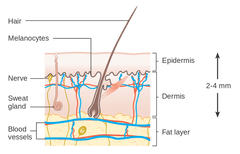
Skin is one of those tissues that responds well when put through controlled stretching. When a slight mechanical over-stretching is applied, the skin cells are stimulated to go through mitosis or cell division in that region to form newer cells that are identical to parent skin cells. This stimulation is made possible through a process called mechanotransduction where the mechanical overstretch is communicated as an electrical and chemical signal for the body to undergo mitosis.
Mitosis
Mitosis is the division of a parent cell into two identical cells. In the human body, mitosis is a normal occurrence that happens on a daily basis on a variety of tissue types.
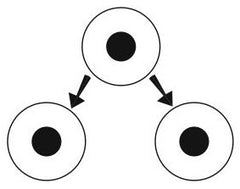
For example on the skin, the older cells gradually are replaced by the newer ones. So, cell replacement is a constant occurrence on skin tissues.
The science of skin regeneration which is still a nascent field of research relies on the process of mitosis that enables the formation of newer cells that are identical in properties to the older ones.
Mechanotransduction
Mechanotransduction is the process by which the mechanical signals are sensed by the body through the mechanoreceptors present in the tissues and these signals are converted to electrical or chemical signals within the body.
In the context of skin expansion, mechanotransduction is important as the sense of mechanical overstretch is conveyed through mechanotransduction into chemical signals that stimulate mitosis of the skin cells being stretched.
Collagen
Collagen is a type of protein that is abundant in the human body. Collagen is what gives the skin its elasticity, and ability to stretch. You will notice that people get wrinkles and skin gets looser as they get older. This is because the ability of the body to produce collagen reduces as you get older. Hence younger people have supple skin while the skin becomes looser as you get old because of reduction of collagen production.
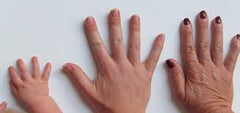
Collagen is also the main connective element on the connective tissues and acts as a support for most tissues and provides structure to the cells. In terms of stretching, the looser the skin is, the easier it is to stretch. As the skin is stretched and newer cells are formed through mitosis, collage production also increases. With the formation of the new skin, which is identical, the overall surface area of the skin being stretched increases. Collagen is primarily created by cells known as fibroblasts.
Epidermis and dermis
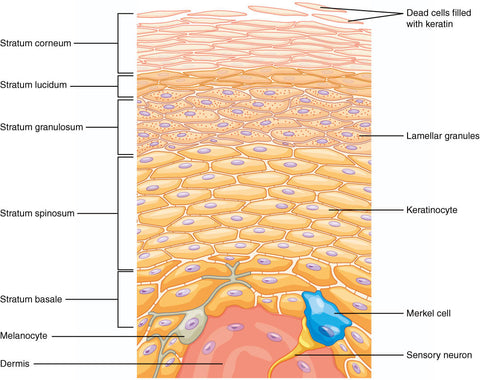
Epidermis is the outer layer of the skin while dermis is the deep inner layer of the skin. Through mitosis, new cells are regularly formed in dermis which move up to replace the outer skin layer of epidermis as dead cells are replaced consistently. Dermis also houses fibroblast cells which produce collagen. If the inner layer of dermis is damaged, scarring may occur through wound healing mechanism.
Fibroblasts and Myofibroblasts
Fibroblasts are cells that produce collagen that is the main connective element on the skin tissues.Myofibroblasts are also cells that come into play during the wound healing through speeding up the contraction of the wound at the edges through collagen deposition, cell contraction and aligning collagen in parallel direction rather than a random basketweave structure. These cells then shed off as the healing is complete.
Scarring or wound healing
It is important to explain the mechanism of wound healing. This mechanism is entirely different from the tissue expansion process and is one that you would want to avoid if you want to see progress with opening up your phimotic band.
If you have ever have a cut, you might have noticed that the new skin formed, otherwise known as a scar, feels and looks different than a normal skin.
Scarring is different from skin regeneration, as a result of tissue expansion, because the new skin formed through skin regeneration has the exact same properties as the parent skin cells.
We will now explain why the skin formed as a result of the healing process of the wound is different. In a scar tissue, the fiber composition of collagen tissue is very different than in a normal skin tissue. In the normal skin tissue, the collagen fibers have a basketweave form while in a scar tissue, they are aligned more in one direction.
This makes the scar tissue less elastic than a normal skin tissue. The new scar tissue that is formed as a result is also more resistant to skin expansion or regeneration through stretching. Along with that, the myofibroblasts formed as a result of healing process lead to skin contraction at the edges to speed up the wound healing process.

In case of wound healing, the new skin formed that replaces the old skin is not entirely scar tissue. Some percentage of it is scar tissue but the rest is actually regenerated skin that is identical to the original skin tissue. Hence it is possible that if the tears or wounds are small, the scar developed may be minimal.
How Stretching works
There are only two pathways by which the new skin cells form :
- Pathway #1- Skin expansion through controlled stretching
- Pathway #2 Healing of the skin (Wound healing)
Your goal is to stimulate pathway #1 through stretching while making sure you avoid pathway #2 at all costs.
Some people make the mistake of “overstretching” or stretching beyond the foreskin’s limit which ends up causing tears etc. This may activate pathway #2 and will prove to be counter productive.
So, gentle consistent and controlled stretching is the way to go when it comes to phimosis stretching.
When a controlled mechanical stretch, through Phimostretch rings and stretching exercises, is applied to phimotic band, the cells in the dermis layer of the foreskin are stimulated. This stimulation occurs because mechanical signal of stretching is converted into electrical signals in the cells through mechanotransduction.
As a result of this stimulation and communication signals sent to cells through mechanotransduction, mitosis at the dermis layer speeds up slightly to form new cells. As the parent cells are differentiated into new identical cells, the surface area of the phimotic band increases and the skin expands.
As the skin expands, the current phimostretch ring size will start to become looser. This indicates that the surface area has become bigger than before, and it is time to move to the next ring and continue the stretching process as usual.
This is a relatively slow process and will need some patience. The good news is that phimotic band, being thin, is probably one of the easiest and most pliable skin tissues on the body to respond to skin expansion through stretching.
You will also notice that as you keep moving to the bigger ring sizes, the skin expansion process may be quicker than before. This is because the bigger the phimotic band, the bigger the change in the surface area will be, through mitosis.
Corticosteroid cream and Phimosis
Almost all of the scientific research on the effectiveness of corticosteroid cream (such as 0.05% betamethasone) for treating phimosis is on children or teenagers. The results can be extrapolated to adults but the effectiveness may not be as pronounced.
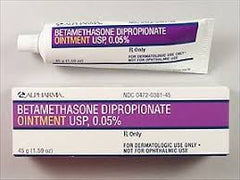
The conclusion in all of these studies is that corticosteroid creams have a positive effect on loosening up the tight phimotic band. One thing to point out though is that corticosteroid treatment without any regular phimosis stretching of the phimotic band (through rings and exercises) is not going to be effective in curing phimosis as a standalone treatment.
Phimosis stretching when used in conjunction with the steroid cream is going to loosen up the foreskin quicker over time than just stretching as a standalone process. However, the cream should be used with caution as it can really cause skin atrophy in the areas where it is applied if you are not careful.
So how exactly does the corticosteroid cream work and what is the science behind it?
Two things will happen when the steroid cream is applied over the skin or specifically phimotic band-
- In a normal skin, the older cells on the outer layer (Epidermis) die at a normal rate and are continually replaced by the newer cells produced through cell division (mitosis) in the inner layer (dermis). However, with the use of steroid cream, the outer layer of the skin (epidermis) will start to atrophy quicker than it normally should. Mitosis in the inner layer (dermis) will also be slowed down. Thus the new cells will be slow to replace the older cells than normal. A lot of this atrophy depend on the strength of the steroid cream. This is why doctors prescribe very mild steroid creams for use.
- As we mentioned before the collagen produced by the fibroblast cells in the inner layer are the most important connective tissue element and gives the skin its elasticity.. When the steroid cream is applied, this collagen production is also slowed down than normal. The phimotic band now becomes thinner and easier to stretch than it would with the normal collagen levels.
The collagen suppression through corticosteroid creams is the main mechanism by which steroid creams help with treating phimosis.
The collagen production by Fibroblast cells will resume to the normal levels three weeks after the steroid creams are discontinued (Assuming mild strength steroid creams were used during treatment. Example- 0.05% Betamethasone).
Other examples that utilize same mechanism as Phimosis stretching
You may be wondering, is phimosis stretching alone in the medical field for treating a problem through the principle of tissue expansion through mechanical stretching , or are there other similar issues or examples that utilize the same principle?
The answer is that there is plenty of other examples that work on the exact same foundations of skin expansion, as phimosis stretching. Here are just a few-
- Ear piercing stretching in body jewelry niche- Gently expanding the hole of the ear piercing over time using steel tapers and plugs.
- Ilizarov apparatus- To increase the height of a person through consistent stretching of the bones in the leg.
- Foreskin restoration for circumcised people- Applying stretch on the remaining foreskin to increase its length over time to cover penis head.
- Penis extension through penis extenders such as size genetics- They work on the exact same science of skin expansion to increase the length and girth of penis over time.
- Neck rings in old celtic and african tribes- Used as a status symbol in certain cultures however the process has an effect of elongated neck.
- Skin regeneration - Scar-free skin regeneration of the wound site through applying stress on the edges of the wound. This is a field which is still in early stages of research but is already finding applications in science.
Conclusion
The entire process of phimosis stretching through rings and exercises can be viewed through the lens of skin expansion and tissue differentiation through controlled and modulated mechanical stretch. Hopefully, we have painted a good visual picture for you to visualize how the stretching process works, and how it fits into your personal phimosis journey.
Through stretching, your goal should be to activate pathway#1 of skin expansion while avoiding pathway#2 of wound healing through scar formation. You can do this by not overstretching your phimotic band (use appropriate sized rings), understanding that it will take a little bit of time and hence, being patient with the stretching process. Active stretching through finger exercises should also be complemented with passive stretching through Phimostretch rings to see final results.
P.S- Now that you understand the science behind the phimosis stretching, it should be a no-brainer for you to kickstart your phimosis stretching journey with a bang with this Phimostretch rings kit. If you already know about this kit, and can’t wait to get started with stretching, you can click the buy now button to purchase.
